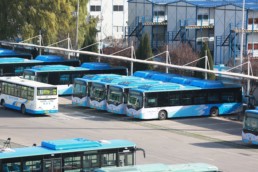The Chinese city of Nanjing has positioned itself as a world leader in electric vehicle use, ushering over 4,300 EVs onto the streets in just one year.
Nanjing has raised the bar on electric vehicles to new heights with its enormous and speedy EV deployment scheme. Since January 2014, the city has put more than 4,332 electric vehicles on the road, including 1,208 buses and 940 taxis. The city has also created three battery-swapping stations and 14 battery-charging stations equipped with 791 charging facilities. While it is not the largest EV fleet in the world, it is the fastest of its size to be implemented: Nanjing was able to roll out its full, operating fleet in under a year.

The government has facilitated this growth by implementing purchase price and electricity price subsidy schemes and by offering incentives for the construction of charging stations. In total, the city government has invested $168 million in this project, and has already seen a clear payoff. In the first year of operation, the city saved 61 million liters of oil and reduced CO2 emissions by 246,000 tons – all in all saving $71 million in energy bills. Nanjing plans to continue its successful scheme, and increase the number of EVs on the road to more than 7,215 by the end of 2015.
246,000 tons CO2 saved in the first year of Nanjing’s EV scheme
The challenge
As air pollution is the cause of one in six premature deaths in China, Nanjing’s promotion of electric vehicles not only helps alleviate this crisis, but also lessens fossil fuel dependence and supports a more sustainable automobile industry.
Co-benefits
Economic This project has positioned Nanjing as an industry hub; manufacturing facilities of 46 EV companies now call the city home. These companies bring Nanjing yearly tax revenues of $16 million.
Health Reducing CO2 emissions by a quarter of a million tons translates into better air quality for city residents.
About Nanjing
Nanjing is a city situated in the heartland of the lower Yangtze River region in China, which has long been a major centre of culture, education, research, politics, economy, transport networks and tourism. Located in Yangtze River Delta area and the center of east China, Nanjing is home to one of the world’s largest inland ports. Nanjing boasts many high-quality universities and research institutes. Nanjing is one of the top three Chinese scientific research centers, especially in the chemical sciences, according to the Nature Index.


